Nothing feels better than crushing a 250-yard drive down the middle of the fairway.
Learning proper golf swing mechanics and sequences is pivotal for unlocking your best possible drives.
By implementing the following impactful tips on setup, backswing, downswing, contact, and error correction, you will gain control and consistency while adding distance.
Let’s dive in…
How To Drive A Golf Ball

To negate strong winds, strengthen your grip pressure for more control through impact. Additionally, favor more loft and less dynamic loft by teeing the ball higher and hitting slightly up on it.
This launches the ball on a higher trajectory to pierce through the wind better. You can also aim left or right of your target line based on wind direction for it to counteract and straighten the end flight path.
Lastly, swing a touch easier in windy conditions to keep tighter control of clubface and ball flight. Adjustments like these will improve driving results in adverse weather.
Below is a step-by-step guide on how to properly drive a golf ball.
1. Have A Proper Setup And Stance
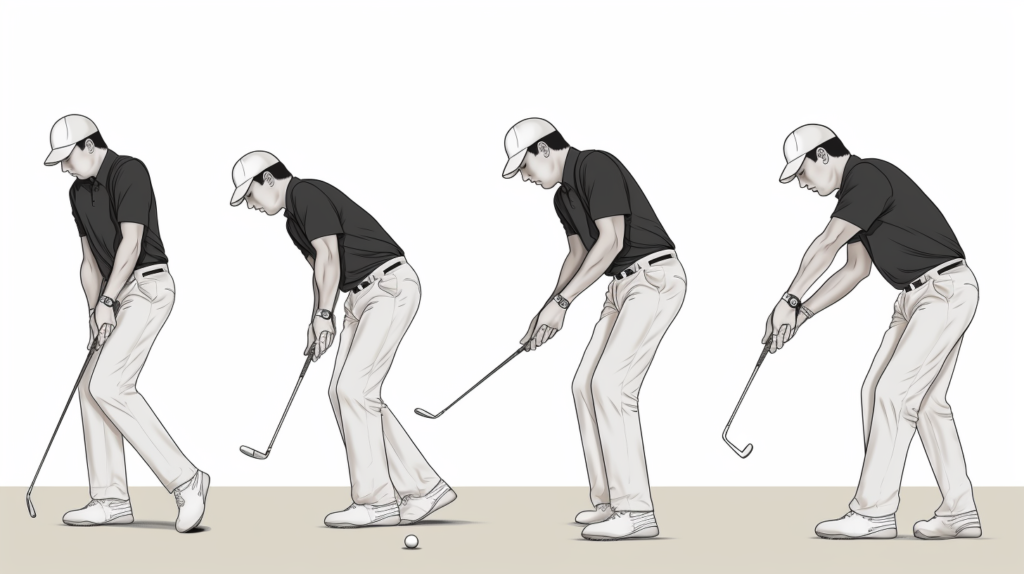
A proper setup and stance is crucial in golf for creating a solid foundation to build an effective swing from. There are several key elements to pay attention to when setting up to hit a golf shot.
The first component is the grip and hand placement on the club. You want to grip the club primarily in the fingers and palms of your hands.
The club should rest mainly across the top padded area of your palm, with your fingers wrapping around either side of the grip. Your hands should hold the club lightly but secure enough not to twist or turn.
The second key setup element is feet positioning and stance width. Stand close enough to the ball so your arms hang comfortably straight down from your shoulders without reaching or straining.
Position your feet about shoulder width apart to provide a stable base. Distribute weight evenly so you don’t sway or lean. Place the inside of the feet parallel to your target line.
Proper posture and spine angle is also vital for control and consistency. Maintain a slightly flexed posture from the hips versus bending strictly from the waist.
Keep your spine angle and posture steady instead of straightening up during the swing. This steadiness promotes solid ball striking.
The final component is ball position, which varies based on the club you are using. However, a central tenet is having the ball positioned so your club impacts it on a slight downward angle just before reaching the lowest point of your swing arc.
This downward strike helps impart backspin and optimal launch conditions.
2. The Backswing
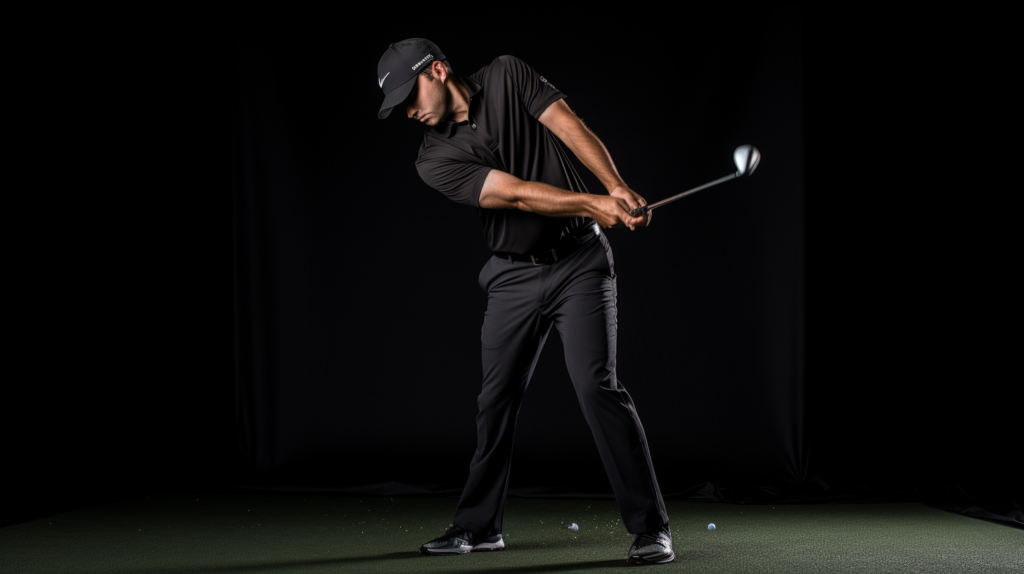
After setting up properly to the ball, the next step is the backswing. This is where you take the club away from the ball slowly to build power that will unload during the downswing.
There are a few key points to focus on during an effective backswing.
First, make your takeaway smooth and slow without immediately lifting or jerking the club up steeply. Keep the clubhead close to the ground for the first foot or so to start back in the proper direction aligned with your stance.
Don’t manipulate or flip the wrists early but let them hinge naturally.
As your backswing progresses, make sure to rotate your shoulders and upper body away from the target instead of swaying off the ball. Maintain the spine angle established at address while coiling against your posture.
Allow your arms to elevate in tandem with your turn while keeping elbows pointing down and connected to your sides.
A full shoulder turn along with a 90 degree hinge in the wrists loads substantial power into your backswing. However, avoid overswinging past these benchmark positions too dramatically.
Doing so throws off swing timing and makes it hard to redirect everything back to impact.
As you reach the top and finish your backswing, focus on keeping the clubface square instead of letting it open. This position will make it easier to return it back to impact in the proper position.
Additionally, shifting weight into your trail foot solidifies leverage for the ensuing downswing.
The Downswing
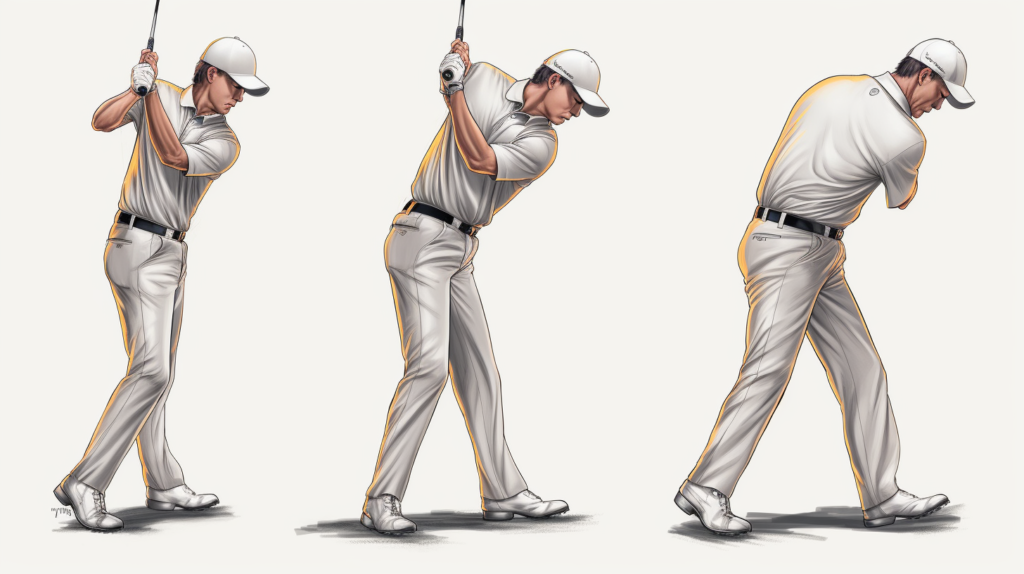
Initiating the transition from backswing to downswing efficiently is vital for accelerating the club into impact. This action sequence generates speed while keeping everything synchronized for solid ball striking.
There are a few important techniques to employ here.
First, bump the hips laterally back towards the target to fire the downswing. This lateral motion helps draw the arms and shoulders downward with controlled force versus releasing too violently.
Time this so your upper body and arms follow your hips in a smooth progression.
As the downswing continues rotating, allow greater weight shift into your front side for added leverage without swaying off the ball. This front side brace powers torque through impact and maintains balance.
Keep turning hard until facing the target.
Also remain patient with hand use through the mid downswing before rapidly releasing and extending through impact. Wrists should be hinged almost identically to address well into the downswing.
Aggressive early hand action causes inconsistency.
Provided you sequence the downswing correctly, lag built into the wrist hinge unleashes like a whip. This transference times up perfectly with rotations and weight shift to apply serious clubhead speed from various sources.
Making Proper Contact
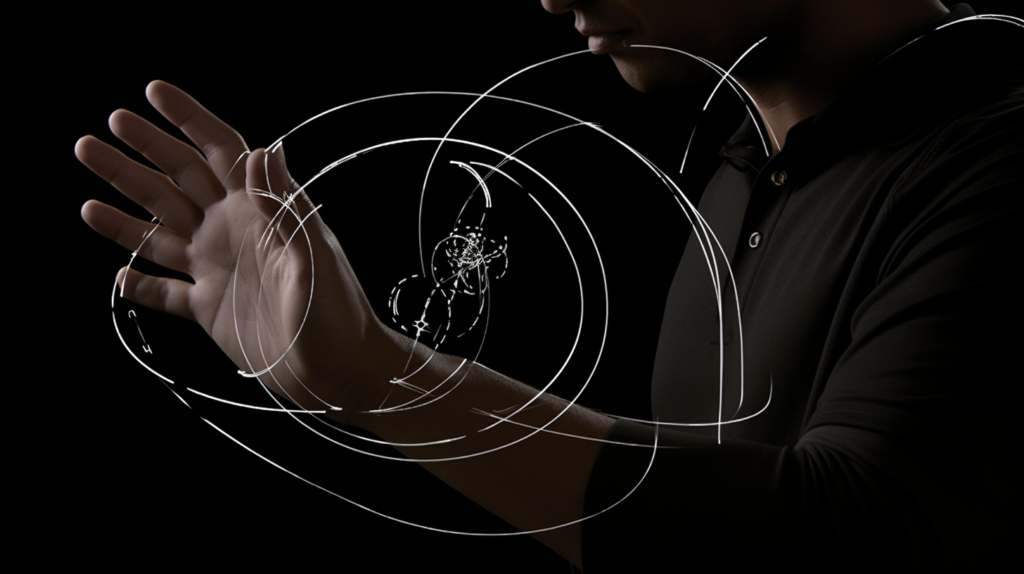
There are intricacies related to making crisp contact for ideal shot outcomes. Clubface alignment, angle of attack, and centering impact are all pivotal for proper ball striking.
Mastering these nuances consistently improves driving capability.
First, ensure the clubface aims back to the target at impact. An open or closed face at the moment of contact sends the ball waywardly slicing or hooking.
Sometimes hand action through impact contributes to unwanted twisting or manipulation of the face.
Additionally, dialing in proper negative attack angle (hitting slightly down) through impact helps compress the ball with irons for optimal launch. However, with drivers you want positive attack angle by sweeping up into the back of the ball for high launch.
Regardless of club, focus intently on hitting the absolute center of the ball for purest contact. Centered hits provide the best energy transference, distance, and accuracy.
Contact away from the sweet spot reduces ball speed significantly.
Finally, recognize that maximum clubhead speed combines with other proper impact factors to drive the ball the furthest. However, don’t overswing simply to increase speed.
Tempo and sequence supersede brute strength for peak effectiveness driving the golf ball.
Common Swing Errors
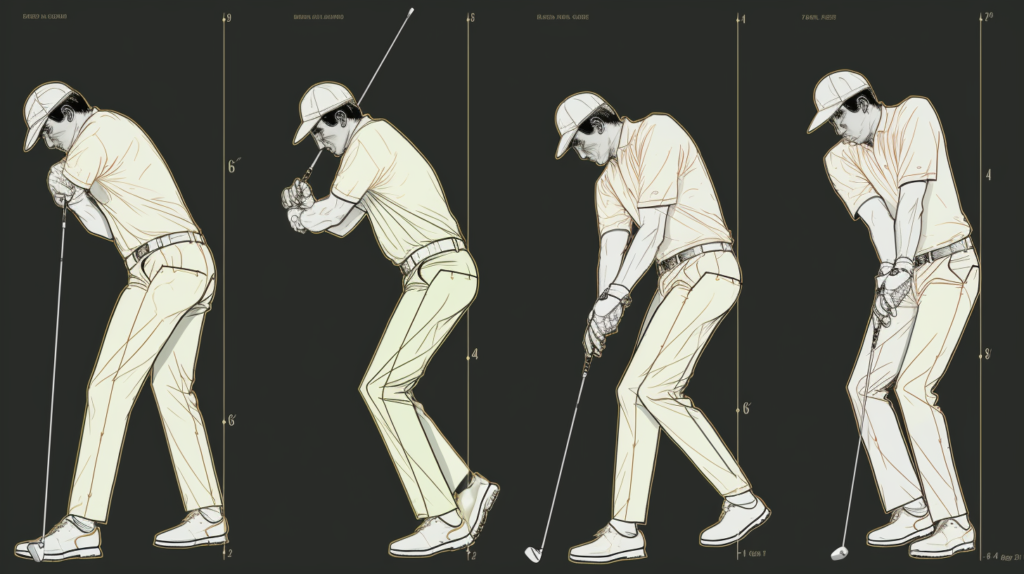
Because the golf swing contains so many moving pieces, mistakes easily develop without proper fundamentals ingrained. However, recognizing the most prevalent faults allows you to diagnose issues and make corrections.
The slice is one of golf’s most common afflictions caused predominantly by an open clubface relative to swing path. Sometimes an outside to inside move through impact contributes to this by opening the face excessively.
Poor grip and weak wrists also influence unwanted slice or fade spin.
Conversely, closed clubface through impact typically hooks drives left or right for righties and lefties respectively. Sometimes downswing approaches too far from the inside correlate to closed face results at impact.
Proper grip and release while avoiding manipulation fixes unwanted hooking potential.
Hitting behind the ball frequently stems from driver attack angles too steep causing club to bottom out behind the ball. Shallowing trajectory just before impact helps avoid this.
Additionally, shifting weight too quickly reduces accuracy resulting in chunked or fat drives.
The dreaded top generates highly unpleasant low screaming drives. This happens when the clubhead fails to contact the ball and hits the turf first instead during downswing.
Making overly narrow divots and releasing hands too early causes tops. Widen arc and delay hand use to correct topping.
Lastly, using hands and arms too aggressively or prematurely to hit the ball often leads to inaccurate inconsistent drives. Excessive effort muscling the club compromises sequence, timing, leverage, and efficiency for mediocre results.
Trusting natural mechanics optimizes driving capabilities.
Conclusion
Mastering the proper golf swing mechanics for driving the ball requires patience and persistence. However, with quality practice and ingraining solid fundamentals into muscle memory, dramatic improvements happen.
Strive to self-diagnose errors through video analysis and external instruction. Benchmark against the swing sequences presented here while continuously refining.
Dialing in an efficient motion pattern optimizes driving capability. With dedication to improvement, your next awe-inspiring drive awaits.



